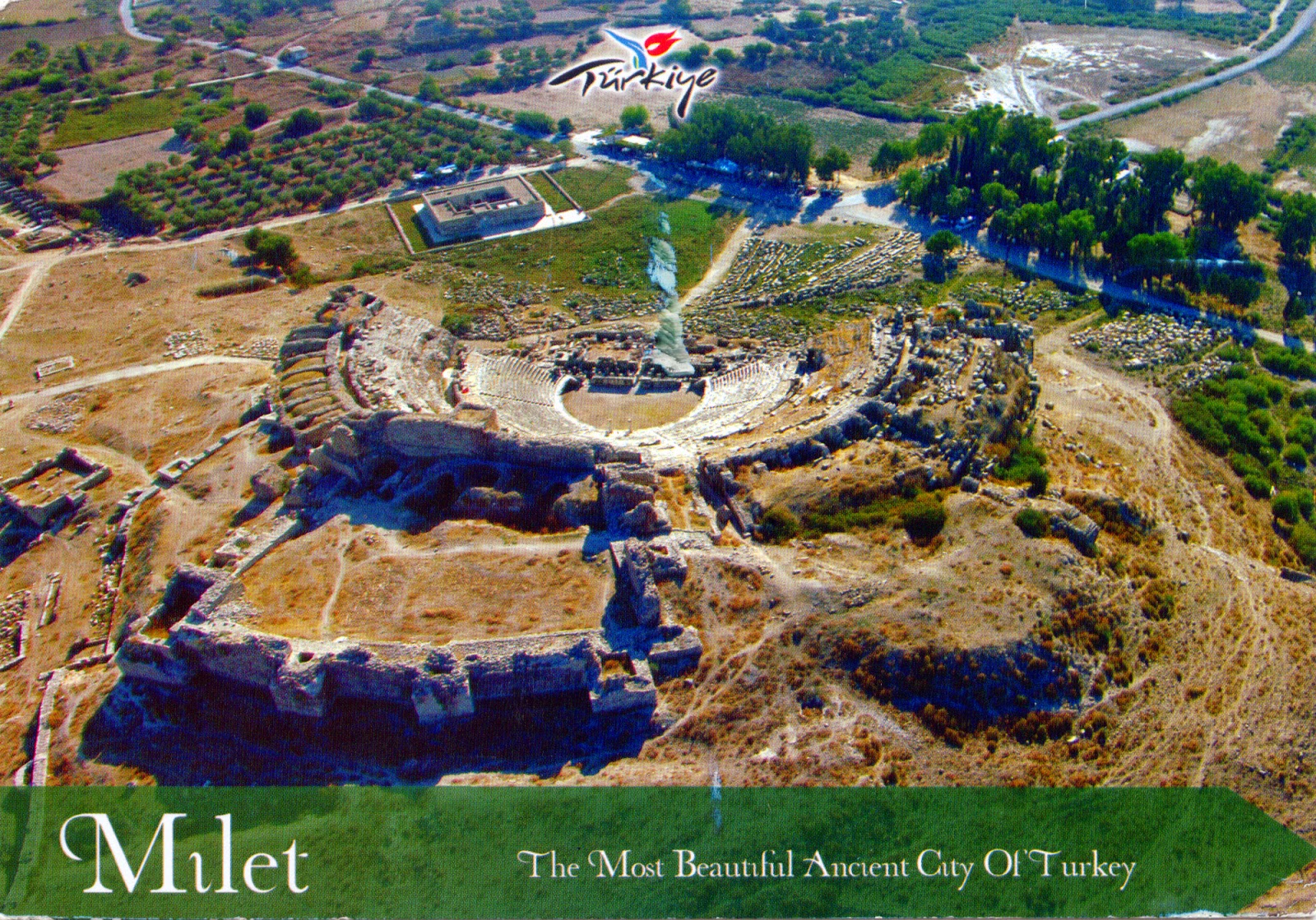July 1, 2014
1124 TURKEY (Aegean Region) - Miletus
Situated on the western coast of Asia Minor, near the mouth of the Maeander River (from which come the word "meander") in ancient Caria, Miletus was considered the greatest and wealthiest of Greek cities before the Persian invasion in the middle of the 6th century BC. After a period of decline, it reached its greatest wealth and splendor during the Hellenistic era (323-30 BC) and later Roman times.
It became known for the great number of colonies founded around the Black Sea, more than any other Greek city (90), but also for the annual pilgrimage along the Sacred Way that led from Miletus to the Temple of Apollo at Didyma, a distance of 20 km (build under the Emperor Trajan), and as the birthplace of philosopher Thales, and of Isidore, the Hagia Sophia's architect. By the 6th century, the silting of the Meander River had destroyed the city's harbors and attracted malaria. By the Ottoman period, the once-proud city was just a small village, finally abandoned in the 17th century.
A good place to start a tour of Miletus is the ruined Byzantine castle on a hill behind the theater (in postcard in forefront). This provides a good view of the scattered ruins and the original coastline. The city walls were massive - more than 10m thick in places - but were stormed by Alexander the Great in his conquest of the city. In St. Paul's time, Miletus had two main harbors. The Theater Harbor was where the original Cretan inhabitants settled. The theater faced it, to the southwest.
The Lion Harbor was guarded by two marble lions, one of which can still be seen. Miletus' theater (with a facade of 140m and a present height of 30m) was originally built in the 4th century BC, but modified and enlarged under Emperor Trajan to seat 25,000 spectators. Paths from the theater lead to the extensive Baths of Faustina (164 AD), near which was the Harbor Gateway, that separated the harbor and the city. The Delphinion (a shrine to Apollo Delphinios) was the main temple. The Sacred Way begins at the Harbor Gate and extended south for 100m to the square in front of the bouleterion. It was 30m wide, with sidewalks 6m wide on either side. It passed through the city walls at a Roman gate restored by Trajan, and continued out of the city to Didyma.
References
Miletus - Wikipedia
Miletus Archaeological Site - Sacred Destinations
Sender: Dănuţ Ivănescu
Sent from Didim (Aegean Region / Turkey), on 13.09.2013
Subscribe to:
Post Comments (Atom)


No comments:
Post a Comment